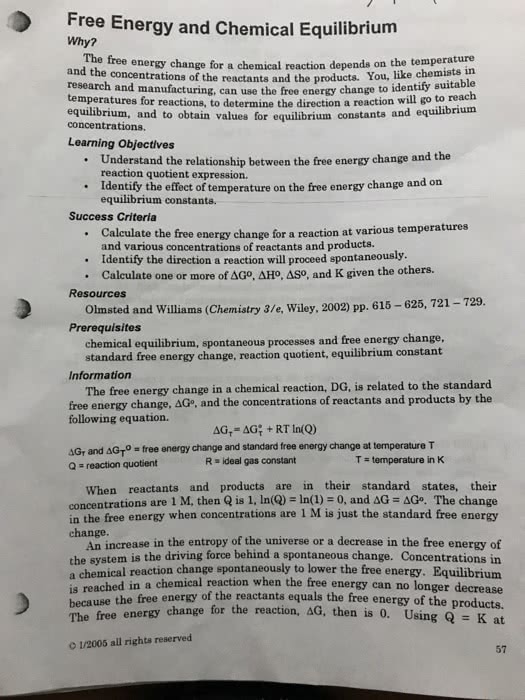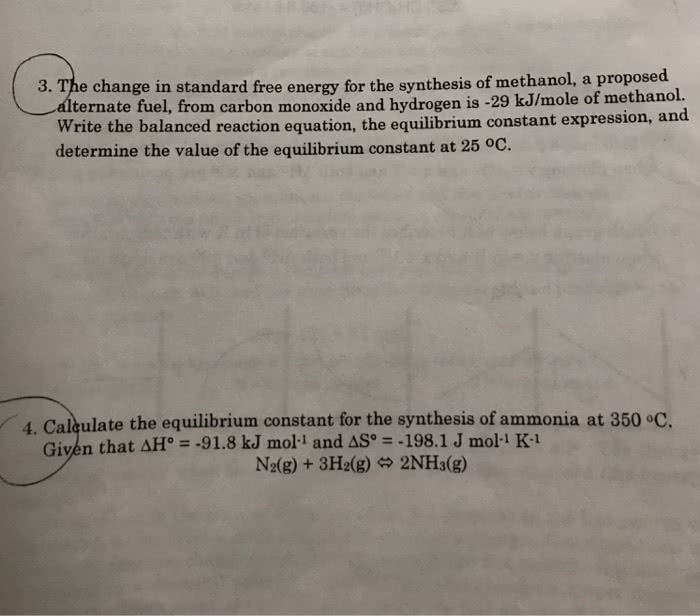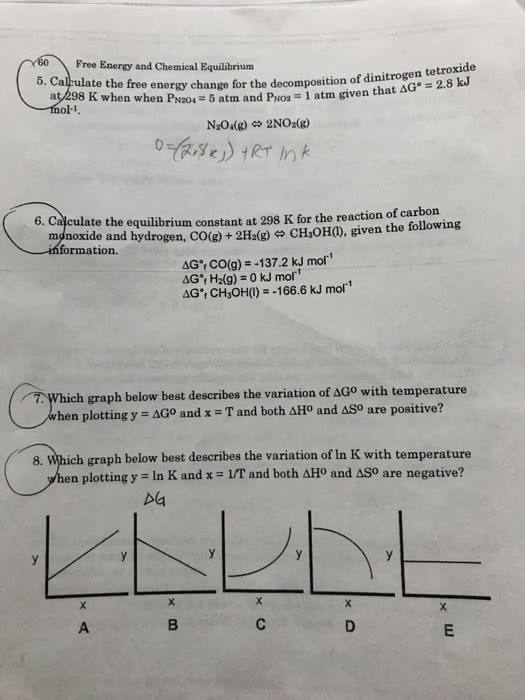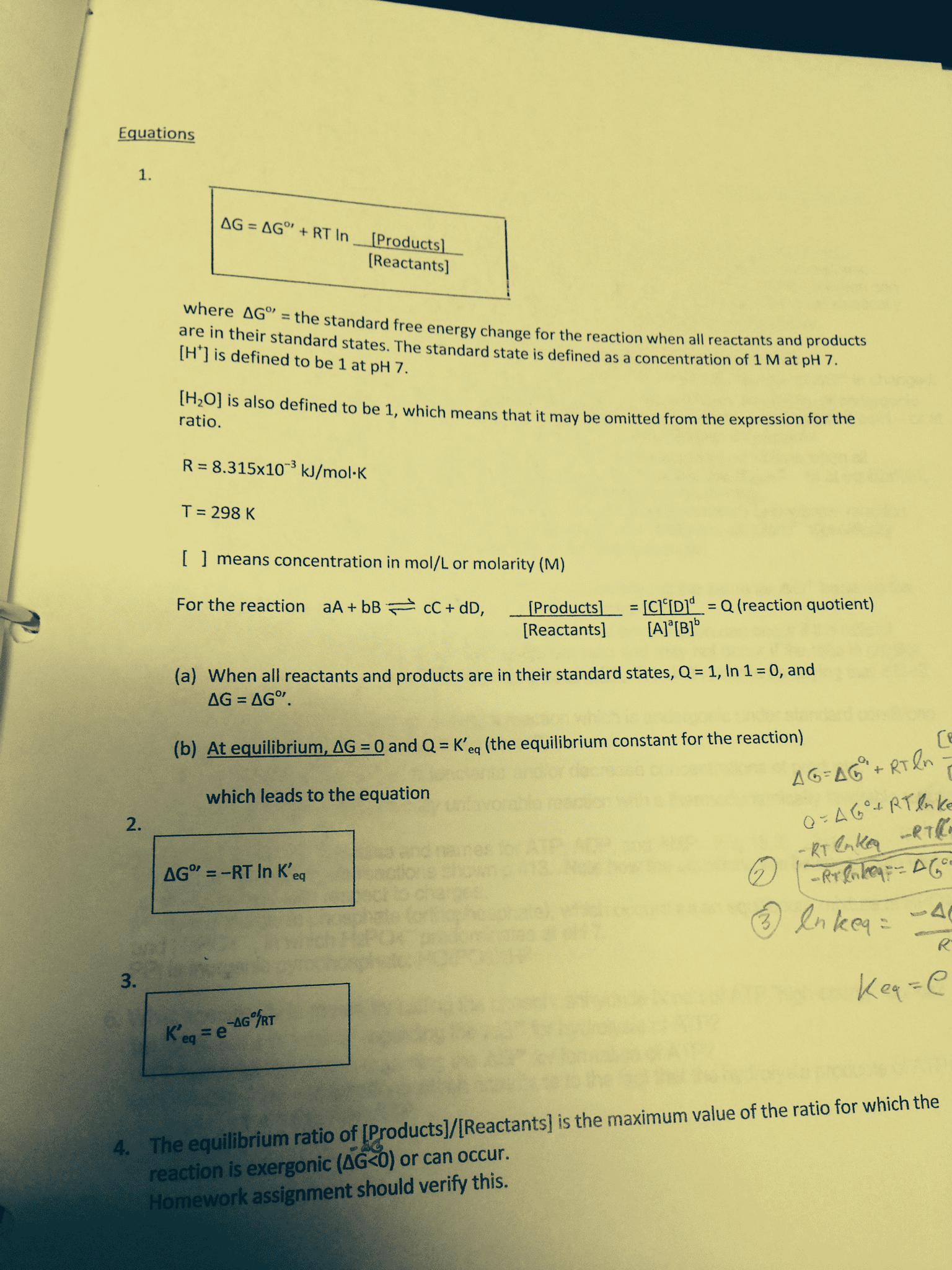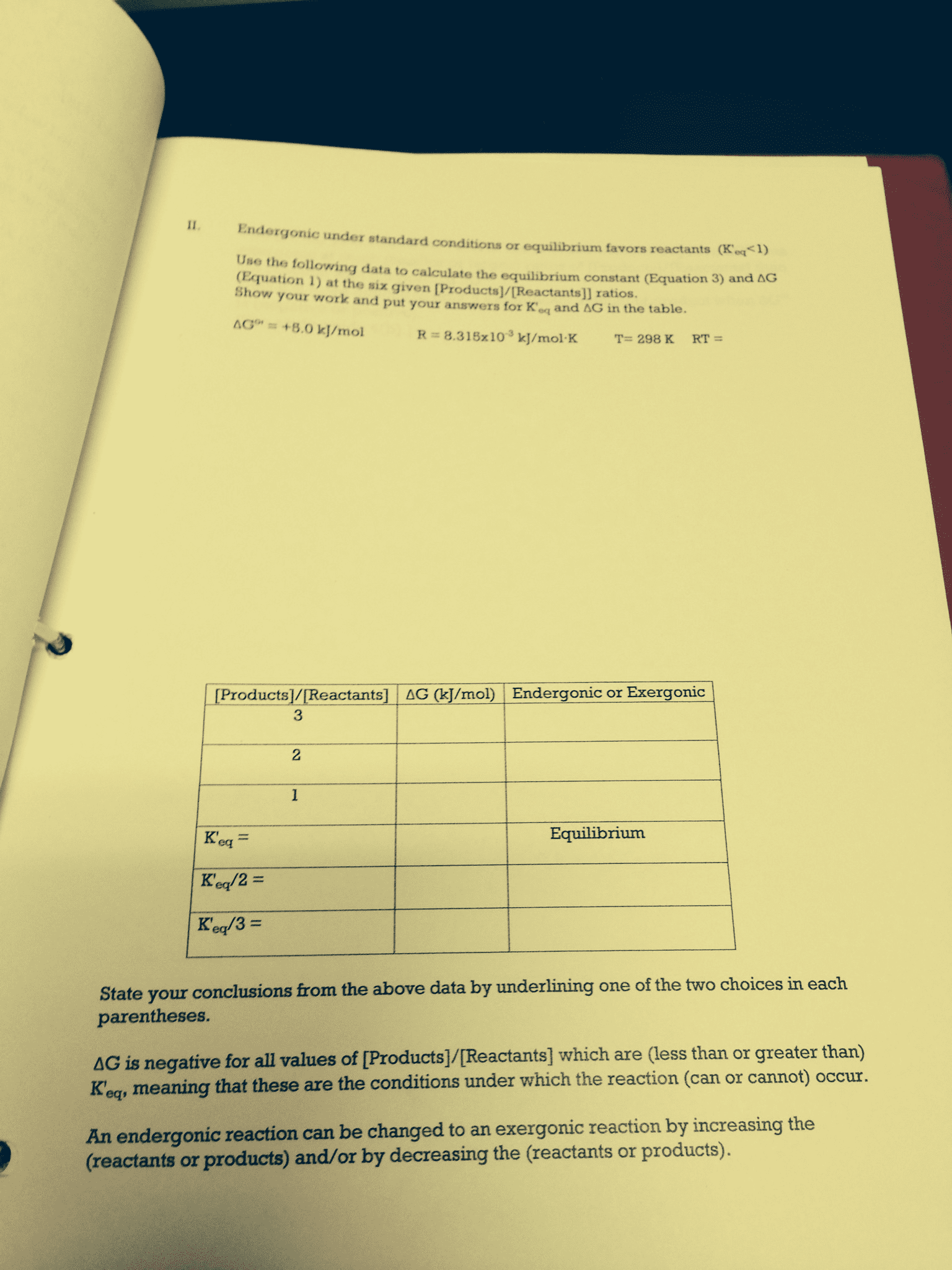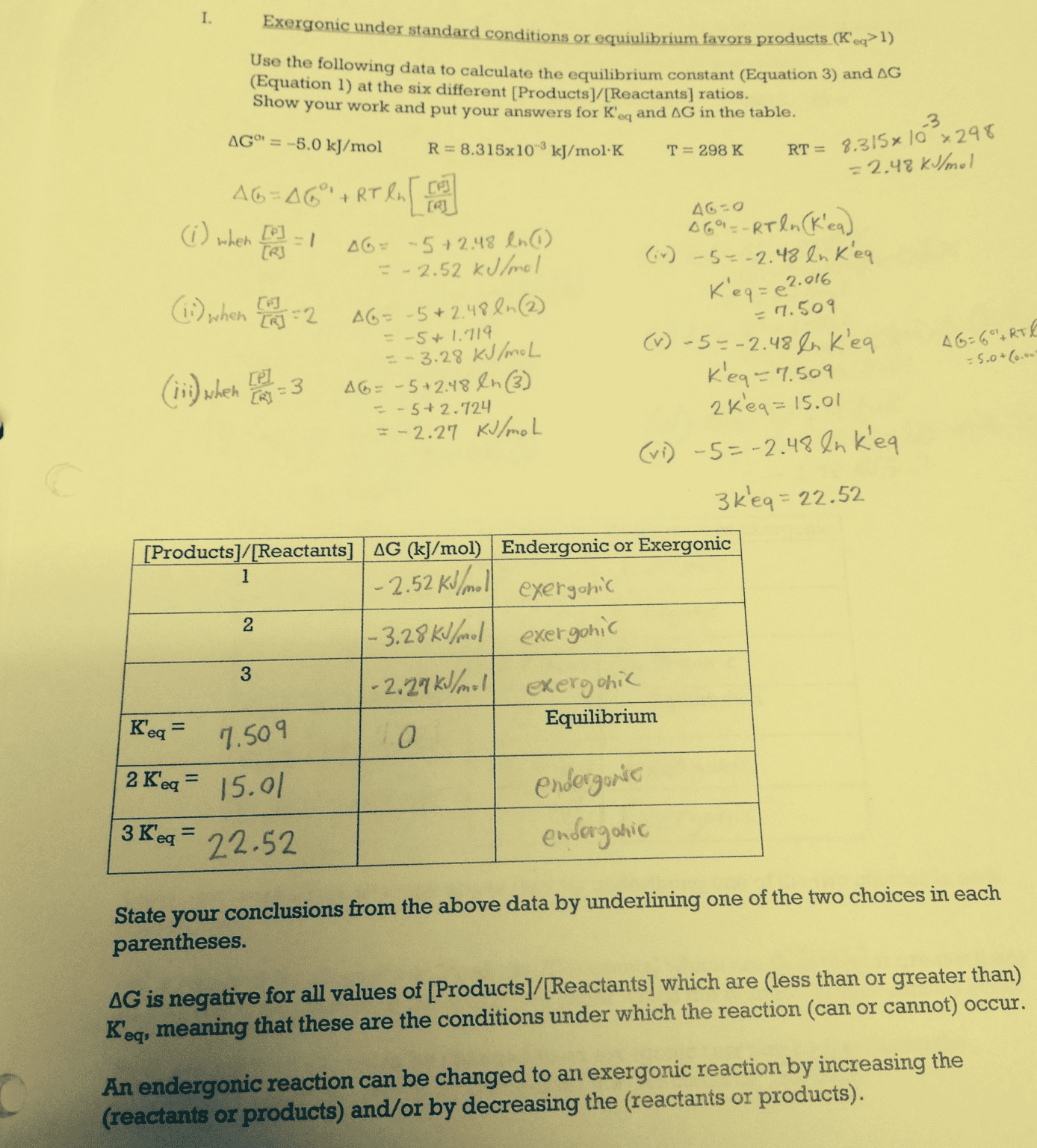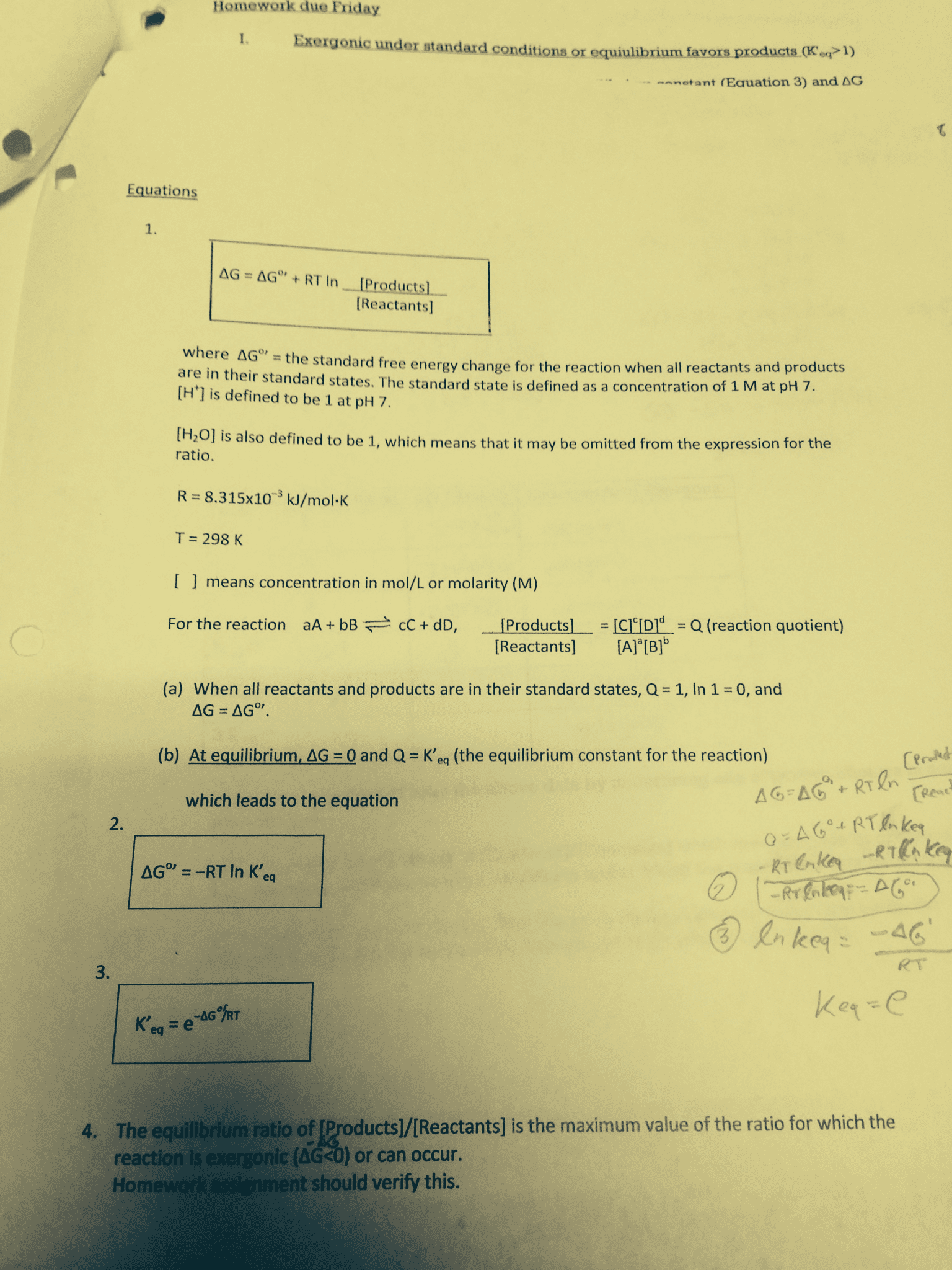CHM 132 Study Guide - Midterm Guide: Membrane Potential, Galvanic Cell, Reaction Quotient
54 views3 pages
6 Mar 2017
School
Department
Course
Professor
Document Summary
G = go + rt*ln(q) q = reaction quotient. If wmax useful = g and at constant t and p, then: qp = h if (cid:449)useful = 0, qp = t if (cid:449)useful = wmax useful, wmax useful is never accomplished in real situations. Cells electrons will flow from the oxidized reaction to the reduction reaction. Salt bridges prevent the build-up of charge on either side. Cell potential e, the (cid:862)pull,(cid:863) o(cid:396) d(cid:396)i(cid:448)i(cid:374)g fo(cid:396)(cid:272)e, of the (cid:272)ell, u(cid:374)it is v. Standard reduction potentials the cell potentials of reduction reactions that are anchored around the cell potential of 2++ (cid:2870) which was give the e of 0v. Creating a cell: take two standard reduction reactions and their potentials. Flip one and then multiply the two in order to create two complimentary half-reactions. Do not multiply the e of either potential by anything other than -1, simply add them together. Choosing the electrodes: either the solid within the reaction or pt.
Get access
Grade+
$40 USD/m
Billed monthly

Homework Help
Study Guides
Textbook Solutions
Class Notes
Textbook Notes
Booster Class
10 Verified Answers
